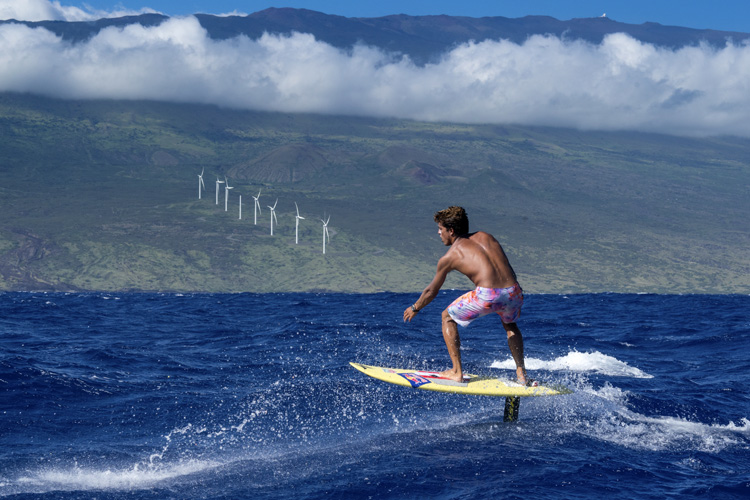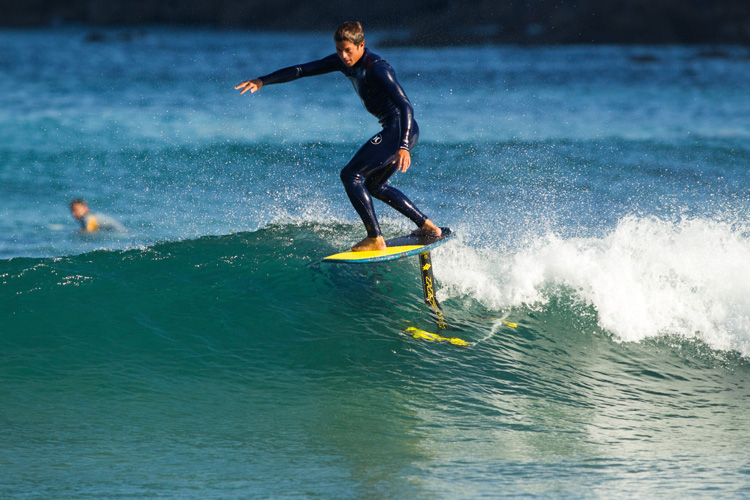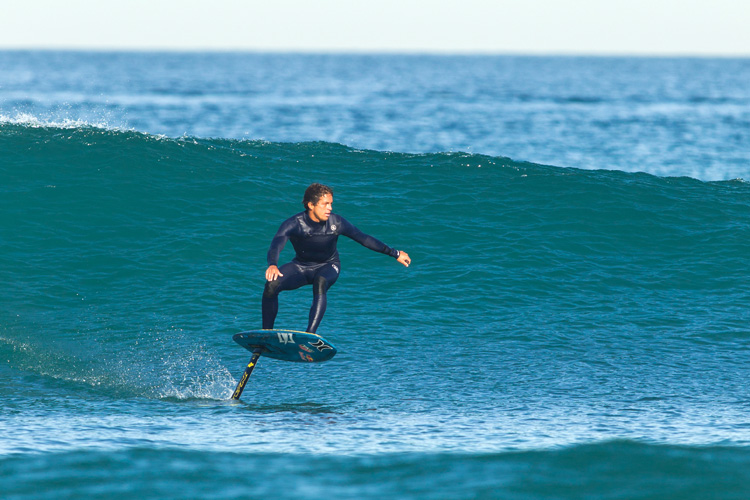Learn how to get started with hydrofoiling safely. Understand the foil board setup, the stance, the riding techniques, and how underwater wings work.
Hydrofoils are the future of water sports. They allow us to access new waves and offshore surf breaks that had never been explored before.
Basically, foils redefined what we considered to be a rideable wave.
Foil surfing is an exciting experience, and it may not require waves to get going.
Hydrofoil surfing is somehow like controlled aquaplaning. It's all about gliding effortlessly and smoothly above water.
A hydrofoil is a long and hydrodynamically designed fin with wings.
The beauty of it is that it mitigates the effects of the wind on the surface of the water, reducing friction and allowing you to angle at 90 degrees in less than a second.
The structure, or fuselage, blends steel, aluminum, and fiberglass and lifts a surfboard outside the water even at low speeds.
Foils can be used to surf, race, or cruise around.
One of the first watermen to attach a foil to a surfboard was Laird Hamilton.
He used it in big wave conditions and proved that it could be a smart and valuable weapon in all kinds of swells.
Kai Lenny was one of the first riders to test the hydrofoil in windsurfing, kiteboarding, surfing, and even bodyboarding.
The Hawaiian waterman also used it in a wide variety of ocean conditions, waves, and scenarios.
Lenny and Naish ended up developing a "Foil Surfing 101" course for those who want to experience the thrill of foiling. Ready to become a foil surfer?

The Surf Spots for Foiling
Hydrofoiling is fun, but we need to make sure it's really safe for ourselves and everybody else around us.
Ideally, find a spot where nobody else is, especially if you don't trust your skill level or if you're still learning.
Because you can ride a foil surfboard almost anywhere, you don't need to go to a crowded break. You can make the most of whatever condition you have.
The Wave
You can ride everything. Even the worst wave you've ever seen in your entire life.
The best way to get started is to find a spot with small waves in the one-to-two-foot range.
The goal is to paddle into whitewater rollers, and when you stand up, you'll have all the power you need to ride the hydrofoil.
A jet ski or a boat may help you learn the basics and adapt to the board by, for example, grabbing a rope and getting used to the overall riding feel.
The Foil Board Setup
The place where you attach the foil to the board depends on your weight and height and the wave you're about to ride.
If you're a small surfer and need an extra lift, you will position the wing forward in the box. A larger rider should move it forward, too.
However, when the waves get bigger, the plate system should move farther back on the tracks.
The Stance
Ideally, you should place the traction pads exactly where your feet should be. They work as guidance to your stance.
So, the trick is to find the sweet spot, which generally translates into having your back foot over the mast or maybe a little bit behind it.
If you want to start pumping or make a tight radius turn, you can always step back a little bit, and you'll be right on the kicktail.
Aim for a shoulder-width stance with a lot of front-foot pressure.

Entering the Water and Paddling Out
Avoid dings and embarrassment when walking into the water by holding the board like a standard surfboard and grabbing the foil's wingtip with the other hand.
When you're in chest-deep water, start paddling out like you do on a regular board.
Duck diving can be surprisingly easy because foils create extra lift and will project you through the wave.
Pop Up and Ride
When you spot a wave coming, start paddling until you feel you've caught it. The take-off process on a foil board is identical to that of surfing.
As soon as you stand up, apply pressure on your front foot, like snowboarding on the slopes. And the steeper the wave gets, the more you need to lean forward.
Having the traction pad installed in the right place will ensure you won't need to think about where to put your foot down.
In the early rides, you'll experience a different feel compared to regular surfing.
You'll need to adopt a squat stance while keeping your chest vertical and your shoulders wide open so that you maintain the right balance and don't fall.
How the Foil Works
It's quite simple to understand the mechanics of foils. The process is similar to an airplane or bird's wings.
The more you lean back on your back foot, the more the wing will tilt upright, creating more lift.
In the opposite direction, the more applied weight on your front foot, the more the wing will dive underwater.
Finding your balance is key to controlling the hydrofoil surfboard.
